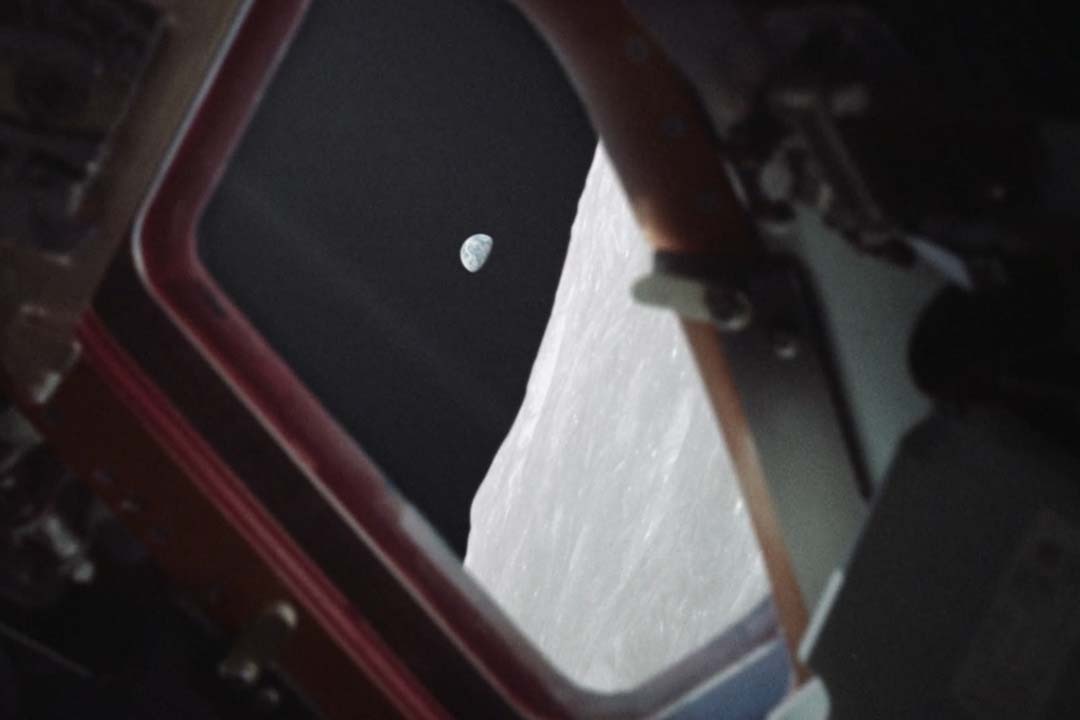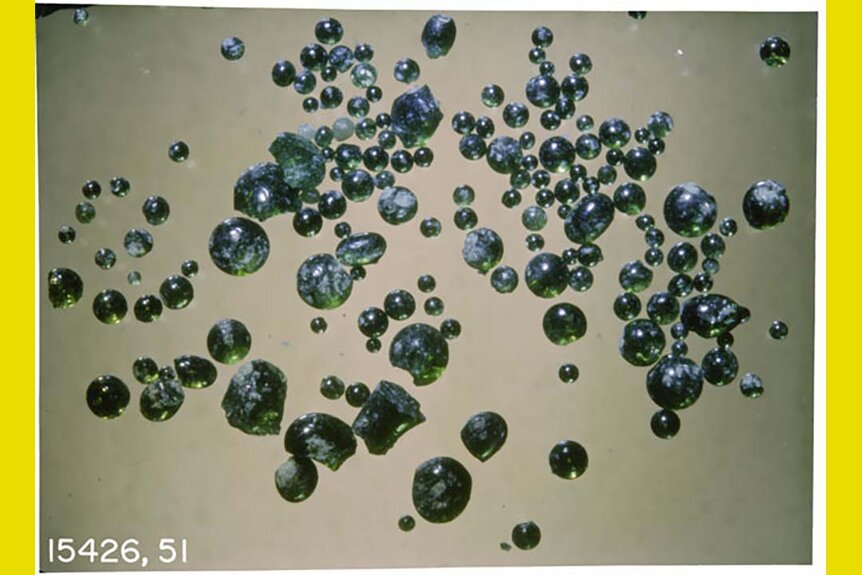Create a free profile to get unlimited access to exclusive videos, sweepstakes, and more!
Asteroid impacts formed natural water bottles on the Moon
It probably tastes SO crisp!

Apollo 8 got a lot of firsts in the record books. The mission, which launched December 21, 1968, carried a crew of three. A few days after liftoff, Frank Borman II, James Lovell Jr., and William Anders became the first human beings in history to fly to the Moon. Even if you’re not well-versed in the history of space exploration, you might recognize Jim Lovell’s name. He is one of only three astronauts to fly to the Moon twice. The other two are John Young (who flew on Apollo 10 and 16) and Gene Cernan (who flew on Apollo 10 and 17). Lovell is the only one of the three to orbit the Moon on two separate occasions without landing. His second mission was Apollo 13.
Apollo 8, of course, was never meant to land. It was the second crewed Apollo mission but the first to leave low-Earth orbit. It was also the first crewed spacecraft to fly to the Moon, something which will soon be repeated by Artemis II, and set the stage for the rest of the Apollo program, eventually leading to Armstrong and Aldrin’s historic first steps. You can get all of the gritty details straight from the astronaut's mouth in First to the Moon, the story of Apollo 8 now streaming on Peacock!
RELATED: Meet the Artemis II astronauts, set to take NASA's historic 2024 return trip around the Moon
Apollo was largely comprised of a handful of long weekends on the Moon, but they provided information and lunar samples which are still being studied, more than half a century later. Not to mention the incalculable emotional value of human exploration. But when Artemis returns humans to the Moon in the next couple of years, it won’t be for a quick visit. One of the key elements of the Artemis program is that this time, we’re going to stay. In order to pull that off, we’re going to need a lot of supplies, nearly all of which have to be brought from home. There aren’t any department stores on the Moon… yet.
Getting cargo off Earth, even to someplace as cosmically nearby as the Moon, isn’t all that easy, so scientists are constantly looking for ways to get some of what we need at our destination. You might not be able to pop over to the local lunar convenience store for a drink, but the Moon does have bottled water already waiting for you.
Sort of.
We’ve known for decades that there was at least some water on the Moon, particularly at the poles where it is more protected from solar radiation. NASA is sending the VIPER lunar rover to the Moon’s South Pole in 2024 on a 100 day mission to find and study water ice. Moreover, we know that interactions between hydrogen in the solar winds and oxygen in the lunar regolith can create brand new water from scratch. What’s less clear is why there is so much water outside of the protected polar zones which doesn’t appear to immediately evaporate away.
The data suggests that water in the surface layers is, in fact, evaporated during the sweltering two-week-long lunar day. By the time the Sun sets on the Moon, the surface layers are bone dry, baked under unrelenting and unfiltered sunlight. Then, during the lunar night, the surface layers get rehydrated. While hydrogen-oxygen reactions are still occurring today, making new water, they don’t happen quickly enough to explain the surface rehydration we’re seeing. The water must be coming from someplace else. Now, a recent study utilizing lunar return samples from China’s Chang’e-5 mission, might have solved the mystery. The findings were published in the journal Nature Geosciences.
That’s because the sample contained a whole bunch of little glass spheres with water trapped inside. Over the roughly four billion year lifespan of the Moon, it has been kicked, smacked, and sucker punched by asteroids, meteorites, and impactors of every kind. If an impact is hard enough it kicks up a bunch of rock and dust, melted from the pressure of the impact. Some of that material ends up in orbit around the Moon where it cools into glass beads and falls back to the surface. If you’re lucky, the water that was in the lunar soil gets trapped in the bead. Do that enough times and you have an asteroid-powered lunar water bottle factory.
The new study suggests that these naturally formed glass beads have trapped significantly more water than we previously thought and, during the lunar night, they can release that water into the regolith. That’s where the rehydration is coming from. The beads essentially act as a sponge, holding onto water to be released into the surface layers later on. Analysis of the water inside the glass beads from the Chang’e-5 sample are consistent with what you would expect from water created through solar wind reactions. And there is a lot of it.
Scientists estimate there are 600 trillion pounds of water in just the top 40 feet of lunar regolith. That’s roughly 110 million Olympic-sized swimming pools waiting to be dredged up and unlocked. According to one of the authors of the new study, Professor Hu Sen from the Institute of Geology and Geophysics of the Chinese Academy of Sciences, the findings suggest that the Moon and other airless bodies in the solar system and elsewhere are capable of storing water created from solar wind interactions and later releasing it into the soil or into space. It’s possible, perhaps even likely, that water is much more common in the universe than we thought, opening up more possibilities for the discovery of extraterrestrial life or for slaking our thirst as we trek from one frontier to the next.
Revisit the mission that started it all with First to the Moon, streaming now on Peacock!



























